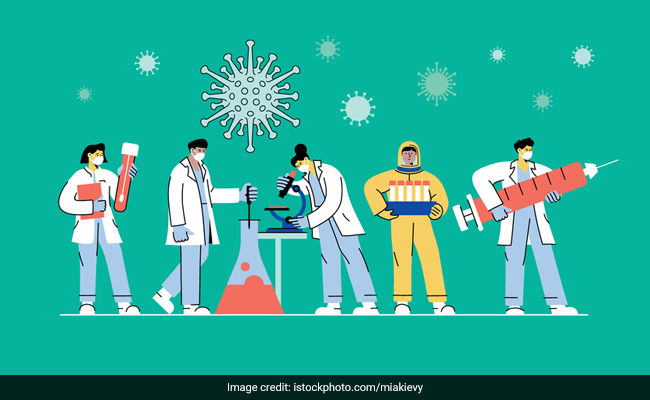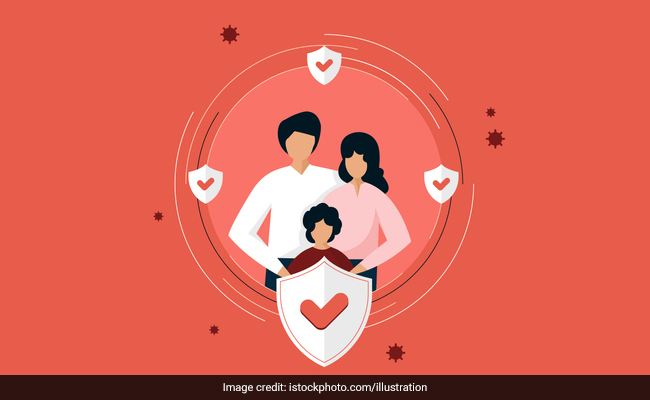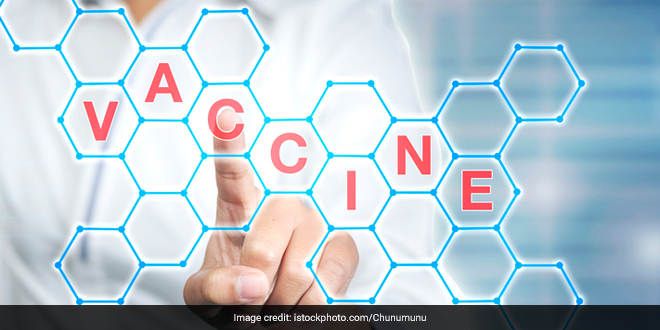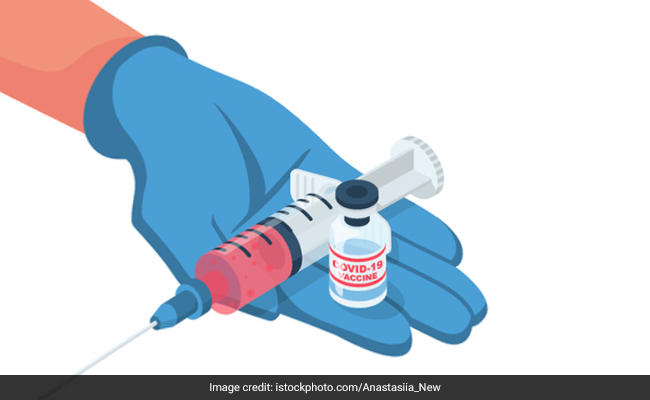New Delhi: The history of vaccine holds a very unique story. It started back in 1796 when Edward Jenner, an English country doctor from Gloucestershire, administered the world’s first vaccination as a preventive treatment for smallpox, a disease that had killed millions of people.
The experiment started, when Edward Jenner, who was still a medical student, noticed that milkmaids who had contracted a disease called cowpox, which caused blistering on cow’s udders, did not catch the disease smallpox. So, in the month of May, 1796, Edward Jenner performed a small scientific experiment, he took fluid from a cowpox blister and scratched it into the skin of an eight-year-old boy known as James Phipps. A single blister rose up on the spot, but the boy soon recovered. Few days later, Mr Jenner inoculated the boy again, this time with smallpox matter, and no disease developed. Mr Jenner’s theory of artificially inducing the immunity in human body proved correct and vaccination was born.
This technique, known as variolation, involved deliberately infecting a patient with a mild dose of the disease or the virus in the expectation that it would provide protection from a more severe infection in future.
Soon after the experiment was a success, doctors all over Europe adopted Jenner’s innovative technique. In the 19th and 20th centuries, scientists following the same model developed new vaccines to fight numerous deadly diseases, including polio, whooping cough, measles, tetanus, yellow fever, typhus, and hepatitis B and many others. From then to now, vaccines have become an integral part of everyone’s lives, experts say that vaccines are as important to one’s overall health as diet and exercise.
To understand how vaccines work, it is important to know how our body’s immune system works because vaccine harness the natural activity of the immune system itself. Explaining how the natural immune system of our bodies fight any germs or disease, Dr Sharad Joshi, Pulmonologist Special, Principal Consultant at Max Hospitals says,
When our body is attacked with some or the other germs, the first natural barrier that our bodies have to fight it are skin, mucus, and cilia (microscopic hairs that move debris away from the lungs), all work as physical barriers to prevent pathogens or germs from entering the body in the first place. But sometimes the disease-causing bacteria does get through these barriers. That’s when the work of our immune system begins.
Dr Joshi said that human body’s immune system is very strong and is the best way to fight any virus or disease. He added,
The immune system is quick to recognise the foreign particles in the body as invaders. This is because the proteins or sugars on the bacteria’s surface has different shapes to any of the ones in the human body. Once the immune system sees the invaders, it triggers a complex chain of events, involving many of the white cells working together. One type of white blood cells is able to make antibodies to fight the invaders. Antibodies can stick to the proteins or sugars on the bacteria’s surface and can help kill the bacteria or disable them.
Despite our immune system being so strong, the human body can still get infected with the germs and eventually develop a disease. Explaining that, Dr Joshi said,
Not all antibodies will work to kill the bacteria. Until unless the antibody is in the right and exact shape of the virus or germ in the body, it will not disable or kill the virus or germ. Our bodies have a library of billions of white blood cells each of which can only make one shape of the antibody. Now, by the time our body’s natural immune system produces antibodies of right shape, it can take several days. By this time there could be billions of disease-causing bacteria in our body and if the virus is of a nature that it multiplies at a faster rate it will affect our body completely and that’s why we tend to fall ill or get infected with the disease.
Dr Joshi further added,
However, once the right cells are activated, they can quickly divide and turn into a production line, making masses of antibodies that stick to the bacteria. Eventually our body gets rid of all the bacteria and we recover.
Highlighting the important role of the antibodies, he added,
Antibodies remain in our body’s blood and some turn into memory cells, so that, if those specific bacteria ever attack your body again, our immune system will be quick to produce the right antibody, which will eventually help fight the disease.
Why Do We Need Vaccines?
Talking about vaccines and what it actually does to protect the human body from the disease, Dr Katherine O’brien, Director, Department of Immunisation, Vaccines and Biologicals, from World Health Organisation (WHO) said,
We need vaccines simply to train or prepare our immune system towards a particular virus or disease, so that, whenever our body is infected with the germ, it can quickly fight it without making us very ill. In simple terms, vaccines are designed to prevent disease, rather than treat a disease once you have caught it.
Talking about vaccines development and how they are prepared, Dr Katherine O’brien said,
Whenever a vaccine is developed for a particular disease, it works on one thumb rule – to put A part of the germ or activate it in our body, which our body can recognise and develop and immune response.
Talking about coronavirus and its vaccine development, Dr Katherine O’brien added,
There are different approaches to making coronavirus vaccine around the globe. All of the vaccines that are currently developed or are in the making are trying to do one thing – they are trying to get that part of the virus – the spike protein into our body, so that it can develop specific antibodies against the spike protein.
Highlighting the two big categories of approaches being used for COVID-19 vaccines, Dr O’brien said that the first approach is to simply put the vaccine part of the spike protein or spike protein itself into the human body. And the second category is to give instructions to our body’s cells via vaccine on how to make spike protein and let the body produce the spike protein itself for fighting the virus.
She added,
The first category, where we actually give the part of the spike protein or germ to our body, is the method, we have used for developing a lot of the other diseases vaccine. However, the second approach, where we have developed a vaccine that gives instructions to our cells to make spike protein is the new category all together. And it is the very important strategy, as using this approach, we can develop vaccines very quickly for future diseases, it is also more efficient way as we are using the body’s own ability to produce protein, it is a very powerful tool.
Busting the common myth that the vaccine will infect the person with the virus as it uses a part of virus in it, Dr O’brien said,
In all cases, the virus or particles given are so weakened that it doesn’t cause disease in us. So, we will not get the disease from getting the vaccine, even if it uses the weakened part of that very particular germ that causes the disease.
COVID-19 Vaccines And The Technology Being Used

Vaccines made are based on one simple technique, which is known as variolation that involves deliberately infecting a patient with a mild dose of the disease or the virus in the expectation that it would provide protection from a more severe infection in future
The Coronavirus vaccine developed by Oxford-AstraZeneca is called ChAdOx1 nCoV-19 or AZD1222 or Covishield in India. The ChAdOx1 vaccine uses a chimpanzee adenovirus. This is a harmless, weakened adenovirus that usually causes the common cold in chimpanzees. It is altered to use the blueprint of COVID-19 and because it looks like Coronavirus, the body’s immune system then begins to produce immune response.
On the other hand, Bharat Biotech’s Covaxin is an inactivated vaccine. As part of the process, disease carrying virus, in the case of COVID-19 it is SARS-CoV-2, is inactivated or killed and then injected.
Whereas, mRNA vaccines being produced by Pfizer-BioNTech and Moderna works on the other approach, where instead of putting a weakened or inactivated virus into our bodies to trigger an immune response, mRNA or messenger-RNA vaccines use specific parts of the infectious agent like its protein, sugar, or coating. This agent then gives a message to our cells to make a protein or even just a piece of a protein which are like those of the SARS-CoV-2 virus. The protein then triggers an immune response inside our bodies. That immune response, which produces antibodies, is what protects us from getting infected if the real virus enters our bodies.
Also Read: Coronavirus Explained: What Is mRNA COVID-19 Vaccine Technology?
Safety Of Vaccines

WHO says that there is a very strong system in place to both look at the safety and assure safety before the vaccine is authorised for the use
Dr Katherine O’brien added,
The vaccines we have that have been used in the hundreds of billions of doses for decades and in fact for centuries for some of the diseases have been studied and evaluated thoroughly for its safety and for the impact that they have on the body. We have the safety system for all the vaccines that is constantly looking at the information about the performance of the vaccines and picking up any issues that might arise in the future. So, I think, we all can be really well assured that we have a very strong system in place to both look at the safety and assure safety before the vaccine is authorised for the use.
WHO says that some vaccines require multiple doses, given weeks or months apart, this is sometimes needed to allow for the production of long-lived antibodies and development of memory cells. In this way, the body is trained to fight the specific disease-causing organism, building up memory of the pathogen so as to rapidly fight it if and when exposed to it.
Also Read: Vaccine Hesitancy: What It Means And How We Can Tackle It, Experts Explain
Herd Immunity From Vaccination

WHO says when a lot of people in a community are vaccinated the pathogen has a hard time circulating because most of the people it encounters are immune
Explaining the concept of community vaccination that eventually helps protecting all the individuals, even those who can’t get vaccinated, AIIMS Director Dr Randeep Guleria said,
What happens is, when someone is vaccinated, they are very likely to be protected against the targeted disease. But not everyone can be vaccinated. Currently with coronavirus vaccine programme, people with underlying health conditions that weaken their immune systems (such as cancer or HIV) or who have severe allergies to some vaccine components, pregnant or lactating women or people under the age of 18-years of age are not advised to get vaccinated. However, these people can still be protected if they live in and amongst others who are vaccinated.
According to WHO, when a lot of people in a community are vaccinated the pathogen has a hard time circulating because most of the people it encounters are immune. So, it is very important that large number of people are vaccinated in the community. When in a community, a situation comes when most of the people are vaccinated and the chance of people, who are not protected by vaccine, getting infected,
becomes less is called herd immunity.
WHO further states that no single vaccine provides 100 per cent protection, and herd immunity does not provide full protection to those who cannot safely be vaccinated. But with herd immunity, these people will have substantial protection, thanks to those around them being vaccinated. Vaccinating not only protects an individual, but also protects those in the community who are unable to get vaccinated.
Also Read: Coronavirus Explainer: What Are Adverse Events Post COVID-19 Immunisation
NDTV – Dettol Banega Swasth India campaign is an extension of the five-year-old Banega Swachh India initiative helmed by Campaign Ambassador Amitabh Bachchan. It aims to spread awareness about critical health issues facing the country. In wake of the current COVID-19 pandemic, the need for WASH (Water, Sanitation and Hygiene) is reaffirmed as handwashing is one of the ways to prevent Coronavirus infection and other diseases. The campaign highlights the importance of nutrition and healthcare for women and children to prevent maternal and child mortality, fight malnutrition, stunting, wasting, anaemia and disease prevention through vaccines. Importance of programmes like Public Distribution System (PDS), Mid-day Meal Scheme, POSHAN Abhiyan and the role of Aganwadis and ASHA workers are also covered. Only a Swachh or clean India where toilets are used and open defecation free (ODF) status achieved as part of the Swachh Bharat Abhiyan launched by Prime Minister Narendra Modi in 2014, can eradicate diseases like diahorrea and become a Swasth or healthy India. The campaign will continue to cover issues like air pollution, waste management, plastic ban, manual scavenging and sanitation workers and menstrual hygiene.
[corona_data_new]




























